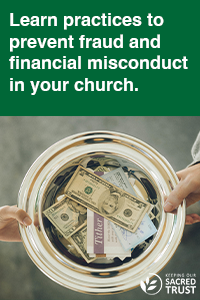Stewardship expert Catherine Malotky shares the success story of a church that approached groups of members who had different giving histories with different invitations to give and enjoyed a 30 percent increase in annual giving.
Some strategies inspire generosity more effectively than others, so we did a little fundraising experiment in our congregation last fall. We decided to categorize our mailings, so different groups of members received different invitations to give.
- Non-givers were asked to make a $250 gift in 2019, which comes out to about $20 per month or about $5 per week. We had never included a dollar amount before, and we hoped that asking for a specific amount might help people hurdle the “how much” question, which can be a barrier to giving.
- Givers who gave but did not pledge were offered a 1:1 match for making their first pledge. To fund a “matching pool,” we invited regular givers to pitch in, getting involved to motivate non-pledgers to try something new.
- Pledgers were thanked for their commitment to the mission and were asked to increase their pledge. If they had made capital budget pledges during the most recent capital campaign, we suggested that they continue that gift by adding it to their annual giving. We hoped to avoid another capital campaign, and a 25 percent increase to our annual budget would mean we could cover our mortgage from the annual budget. So, we communicated this goal.
- Sustainers, most of whom are pledgers, were thanked for their faithful, monthly support of the mission we share. As we had done with the pledgers, we asked for a significant increase in their annual giving.
How did we do? Our annual budget was supported in 2019 with a 30 percent increase!
Segmenting our messaging so it would be more personally relevant was one factor of many in this success, but it was nevertheless significant as an innovative strategy. We have data that shows some non-givers moved into the giving category, and close to 20 percent of them pledged. In addition, almost a third of our 2018 giving-but-not-pledging households made pledges for 2019.
We still have lots of work to do in developing a steward identity, but being more strategic in our fall campaign seems to have produced a more generous outcome. As you try new strategies for unwrapping your annual campaign from outdated assumptions about stewardship, be sure to get fundraising input from colleagues, including those focused on secular work. Listening is another dimension of steward identity formation. In order to listen, sometimes we must first ask.
This article is adapted from a post on the website of the Center for Stewardship at Luther Seminary. Used by permission.
Related Resources
- Optimizing Annual Financial Campaigns Video Tool Kit
- Crafting Better Commitment Campaign Messages by Ann A. Michel
- Should a Pastor Know What Church Members Give? by Ann A. Michel






